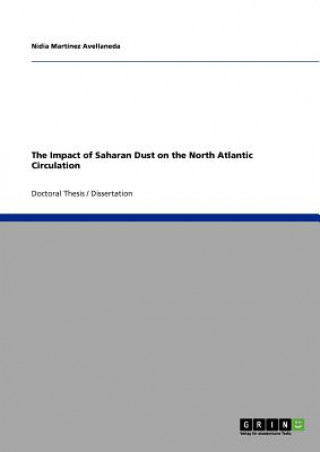
Kód: 05279782
Impact of Saharan Dust on the North Atlantic Circulation
Autor Nidia Martínez Avellaneda
Doctoral Thesis / Dissertation from the year 2010 in the subject Geography / Earth Science - Meteorology, Aeronomy, Climatology, grade: Sehr Gut, University of Hamburg (Institute of Oceanography), language: English, abstract: The ... celý popis
- Jazyk:
 Angličtina
Angličtina - Vazba: Brožovaná
- Počet stran: 116
Nakladatelství: Grin Publishing, 2010
- Více informací o knize

Mohlo by se vám také líbit
-

Is Strategic Planning the Right Method to Define and Implement Future Strategic Options in the UK Construction Industry?
1463 Kč -

The Winglets Quartet (the First Four Stories)
166 Kč -

Easy Tagine
356 Kč -

Banana Fish, Vol. 16
207 Kč -

Vow of Thieves
448 Kč -

Find Me
257 Kč -

Walt Disney Uncle Scrooge and Donald Duck: The Old Castle's Other Secret: The Don Rosa Library Vol. 10
732 Kč -

Oh Cook!
542 Kč -

Modern Genome Annotation
6578 Kč -

Employees
470 Kč -

The Love Hypothesis
247 Kč -

Fubuki-Class Destroyers: In the Imperial Japanese Navy During World War II
690 Kč -

Books of Jacob
465 Kč -

Ottolenghi Test Kitchen: Extra Good Things
706 Kč -

House of Beating Wings
570 Kč -

Villainess and the Demon Knight (Manga) Vol. 1
342 Kč -

Learn To Draw A Graffiti Master-Piece: Your Essential Guide To Tags, Bubble Letters, Wildstyle, Layout And Piecing
470 Kč -

Herschel 400 Observing Guide
1360 Kč -

Cambridge Grammar of the English Language
3700 Kč -

Winning the Peace
2564 Kč -
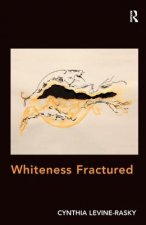
Whiteness Fractured
6176 Kč -

Titian / Metamorphosis
30024 Kč -

Christina Rossetti's Gothic
1701 Kč -
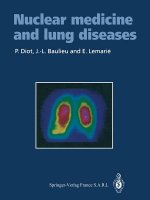
Nuclear medicine and lung diseases
1681 Kč -

Power and Responsibility in Education
8654 Kč -

Bosch Automotive Electrics and Automotive Electronics
3907 Kč -

I Love You Phillip Morris, 1 DVD
378 Kč -

Clueless, Was sonst!, 1 DVD, mehrsprachige Version
246 Kč
Dárkový poukaz: Radost zaručena
- Darujte poukaz v libovolné hodnotě a my se postaráme o zbytek.
- Poukaz se vztahuje na celou naši nabídku.
- Elektronický poukaz vytisknete z e-mailu a můžete ihned darovat.
- Platnost poukazu je 12 měsíců od data vystavení.
Více informací o knize Impact of Saharan Dust on the North Atlantic Circulation
Nákupem získáte 262 bodů
 Anotace knihy
Anotace knihy
Doctoral Thesis / Dissertation from the year 2010 in the subject Geography / Earth Science - Meteorology, Aeronomy, Climatology, grade: Sehr Gut, University of Hamburg (Institute of Oceanography), language: English, abstract: The erosion of Saharan soil is the World's largest annual source of mineral dust aerosols, resulting in a deposition of more than 40% of the global atmospheric dust into the North Atlantic (NA). By changing the atmospheric opacity, mineral dust can alter the shortwave radiative forcing at the surface of the ocean, altering the ocean mixed layer heat budget and therefore affecting the sea surface temperature (SST). Moreover, changes of the total amount of energy received at the ocean surface have an impact on the ocean circulation. In this thesis we combine several satellite observations, in-situ radiation measurements, a 1D mixed layer model of the ocean, and various versions of a 3D general ocean circulation model, to study the impact of Saharan dust on the circulation of the NA. A buoyancy source generated by realistic dust-induced shortwave flux anomalies is imposed in the eastern NA and the differences between this simulation and an unperturbed one are investigated in terms of the ocean dynamical adjustment and changes in the Atlantic Meridional Overturning Circulation (AMOC). A joint analysis of aerosol optical depth retrievals from the MODIS sensor and SST from the TMI sensor for the period 2000-2006 shows a decrease in SST of 0.2° to 0.4°C simultaneously with, or shortly after, strong dust outbreaks, which is consistent with an independent estimate of SST decrease simulated by a local 1D mixed layer model. A comparison between observed TMI SST fields and simulated SSTs with an eddy-permitting model of the NA suggests a local cooling of about 0.5°C on sub-seasonal to interannual time-scales. Results of the 3D simulations show that an advection of the ocean properties ocurs in response to the buoyancy source in the eastern subtropical NA. The eddies and baroclinic instabilities present in the ocean advect the signal towards the west and back towards the east. Once they have reached the African coast, they trigger westward propagating Rossby waves. The time-mean differences of AMOC between the perturbed and unperturbed simulations show an increased meridional transport at 38°N and 43°N of 0.55 and 0.45 Sv, respectively, and a decreased AMOC at 40°N and 45°N of 0.2 Sv. We conclude that the effect of Saharan dust should be incorporated in ocean numerical simulations, specially under the frame of climate change studies when a changing dust load of the atmosphere in response to a changing climate could be possible.
 Parametry knihy
Parametry knihy
Zařazení knihy Knihy v angličtině Earth sciences, geography, environment, planning Geography
2621 Kč
- Plný název: Impact of Saharan Dust on the North Atlantic Circulation
- Autor: Nidia Martínez Avellaneda
- Jazyk:
 Angličtina
Angličtina - Vazba: Brožovaná
- Počet stran: 116
- EAN: 9783640556397
- ISBN: 3640556399
- ID: 05279782
- Nakladatelství: Grin Publishing
- Hmotnost: 299 g
- Rozměry: 297 × 210 × 6 mm
- Datum vydání: 15. March 2010
Oblíbené z jiného soudku
-
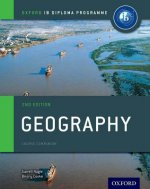
Oxford IB Diploma Programme: Geography Course Companion
1638 Kč -

Geography: An Integrated Approach
2375 Kč -

Birds of New Guinea
1216 Kč -
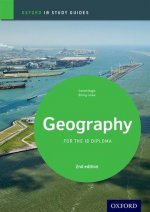
IB Geography Study Guide: Oxford IB Diploma Programme
1255 Kč -

Birds of Hawaii and Micronesia
692 Kč -

Garibaldi
1742 Kč -

Level Geography Fieldwork & Skills
1657 Kč -

DANUBE BIKE TRAIL 1 DONAUESCHINGEN TO PA
405 Kč -

terraQuest Trekking Map Georgian Caucasus
555 Kč -

Incredible History of India'a Geography
266 Kč -

IB Geography Course Book: Oxford IB Diploma Programme
1265 Kč -

Cambridge International AS & A Level Geography Student's Book
1260 Kč -

Justinianic Mosaics of Hagia Sophia and Their Aftermath
2696 Kč -

comfort! map USA
375 Kč -
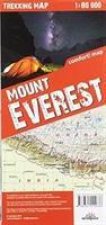
terraQuest Trekking Map Mount Everest
301 Kč -

Cambridge International AS and A Level Geography second edition
1717 Kč -
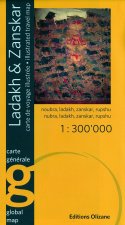
LADAKH ZANSKAR OLIZANE RV WP
430 Kč -

Do Earth
252 Kč -
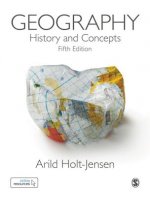
Geography
1712 Kč -

Essential Maths Skills for AS/A-level Geography
404 Kč -

Dictionary of Physical Geography, 4e
1529 Kč -

Economic Geography - A Contemporary Introduction 3e
1225 Kč -

West Midlands A-Z Street Atlas (spiral)
305 Kč -

Butterflies of Europe
831 Kč -

History of the Adriatic: A Sea and Its Civilizatio n Cloth
665 Kč -

Cambridge International AS and A Level Geography Skills Workbook
578 Kč -

Urban Planning Imagination - A Critical International Introduction
626 Kč -

Geology of Egypt
864 Kč -
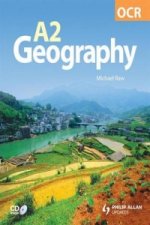
OCR A2 Geography Textbook
219 Kč -

Biogeography and biomorphology
664 Kč -
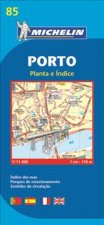
Porto - Michelin City Plan 85
209 Kč -

Once Within Borders
741 Kč -

New Literary History of Modern China
1264 Kč -

Geography for Cambridge International AS and A Level Revision Guide
889 Kč -

Birds of Prey of the East
556 Kč -

Birds of Prey of the West
660 Kč -

IB Diploma
1035 Kč -
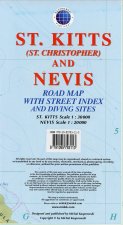
Saint Kitts / Nevis
484 Kč -

Publics and the City
1309 Kč -

Havana / Cuba Central
292 Kč -

Planetary Social Thought
778 Kč -

Quantitative Geography
1258 Kč -

Edexcel GCE Geography Y2 A Level Student Book and eBook
1203 Kč -
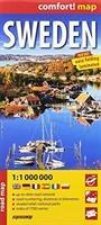
comfort! map Sweden
373 Kč -

Walter Benjamin
779 Kč -
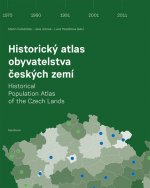
Historical Population Atlas of the Czech Lands
846 Kč -
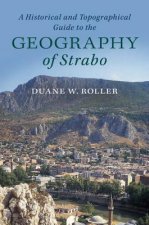
Historical and Topographical Guide to the Geography of Strabo
6553 Kč -

CAMINO SANTIAGO 2326 GPS RABANALTRIACAST
175 Kč -

Introduction to Sociological Theory - Theorists, Concepts, and their Applicability to the Twenty- First Century
1351 Kč
Osobní odběr Praha, Brno a 12903 dalších
Copyright ©2008-24 nejlevnejsi-knihy.cz Všechna práva vyhrazenaSoukromíCookies



 Vrácení do měsíce
Vrácení do měsíce 571 999 099 (8-15.30h)
571 999 099 (8-15.30h)